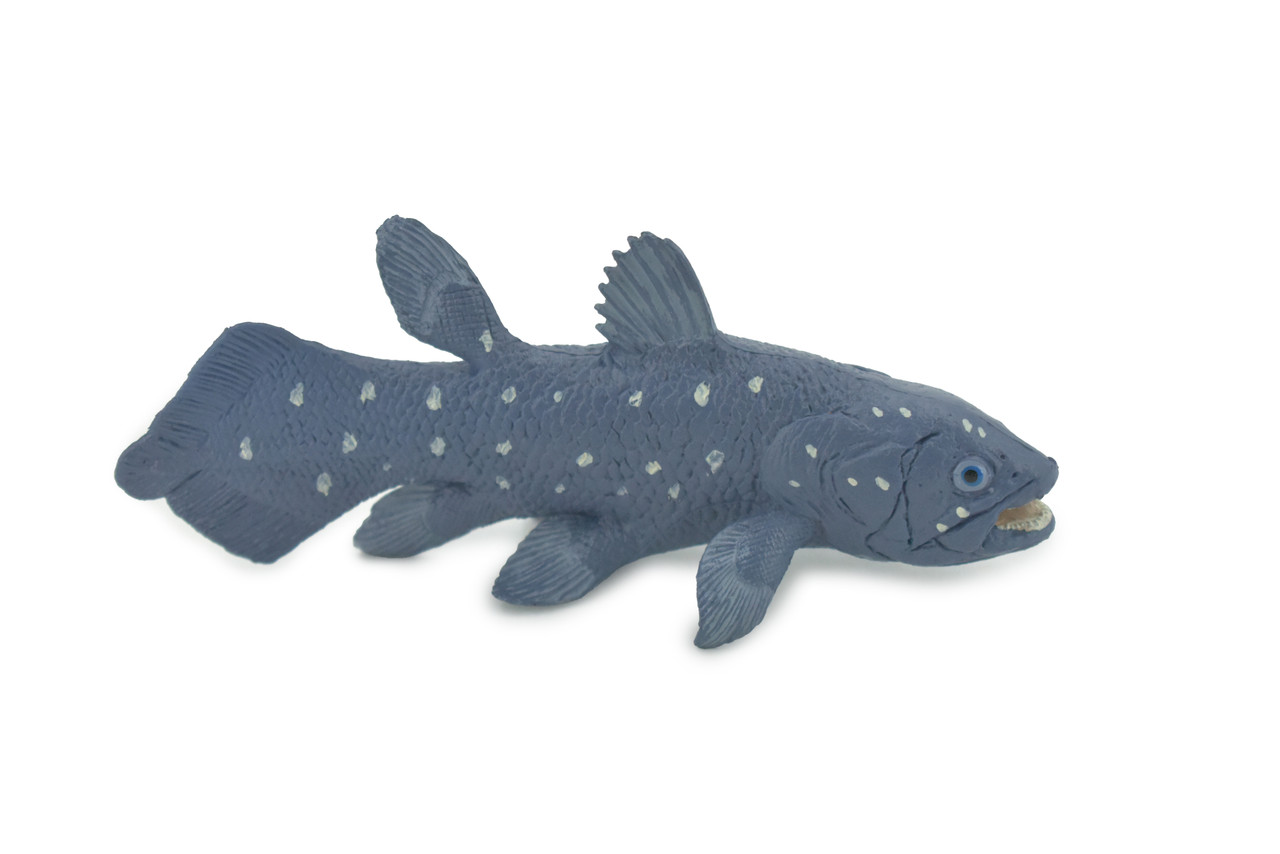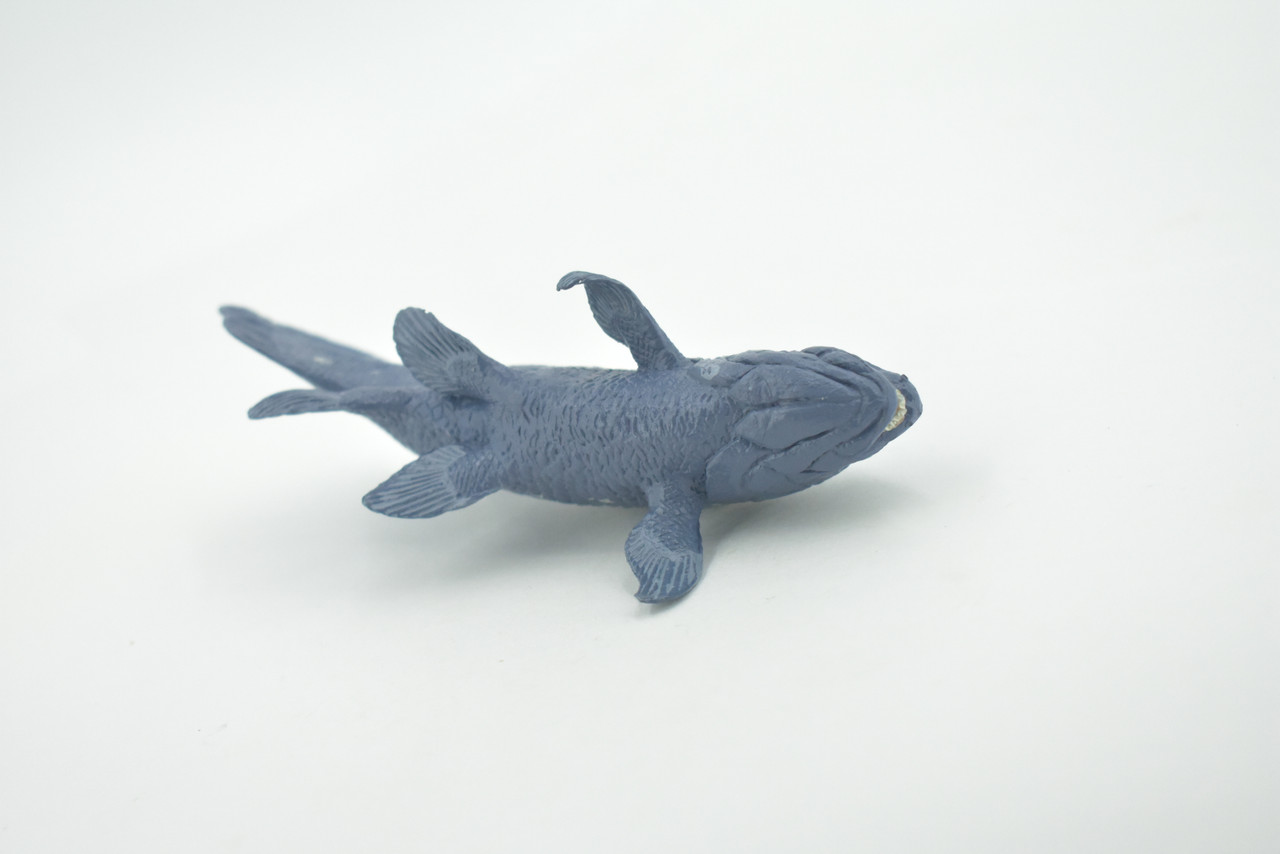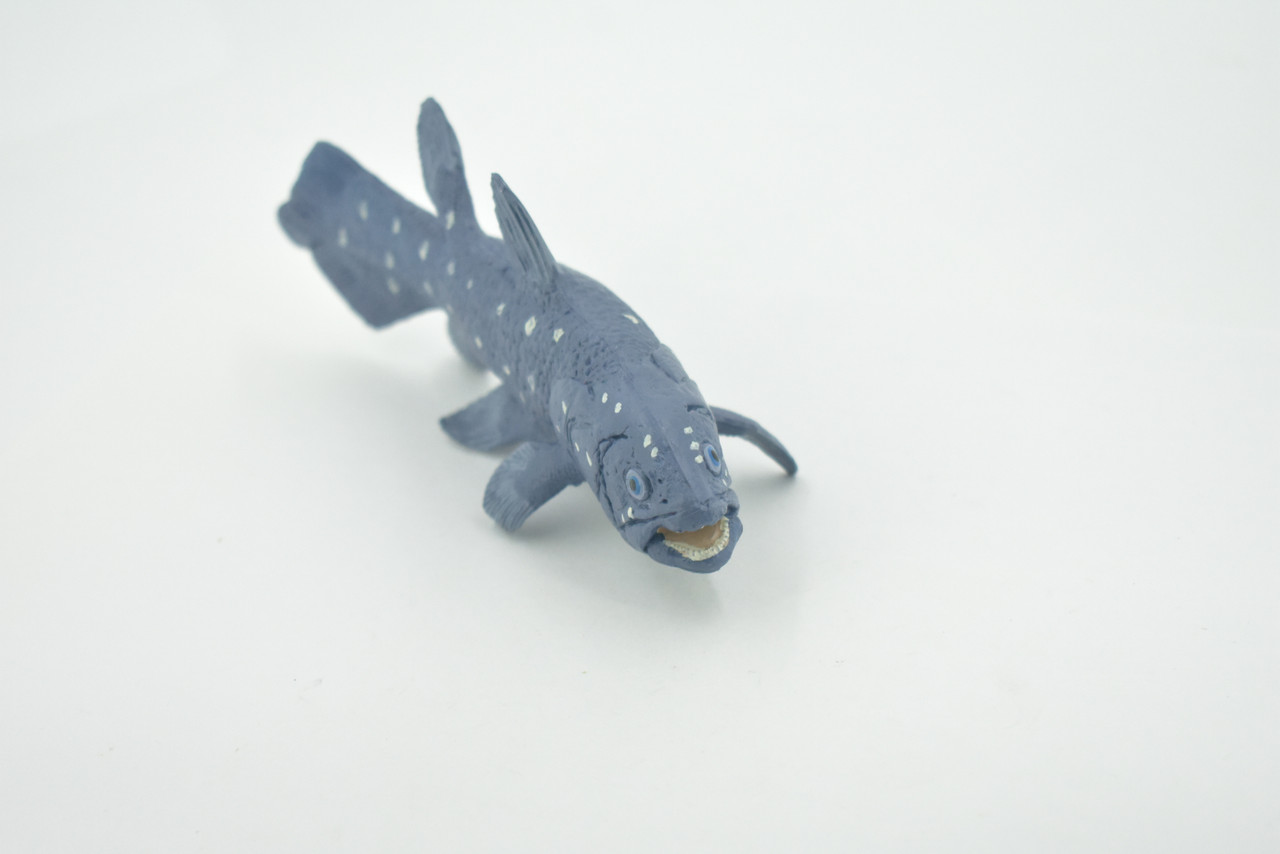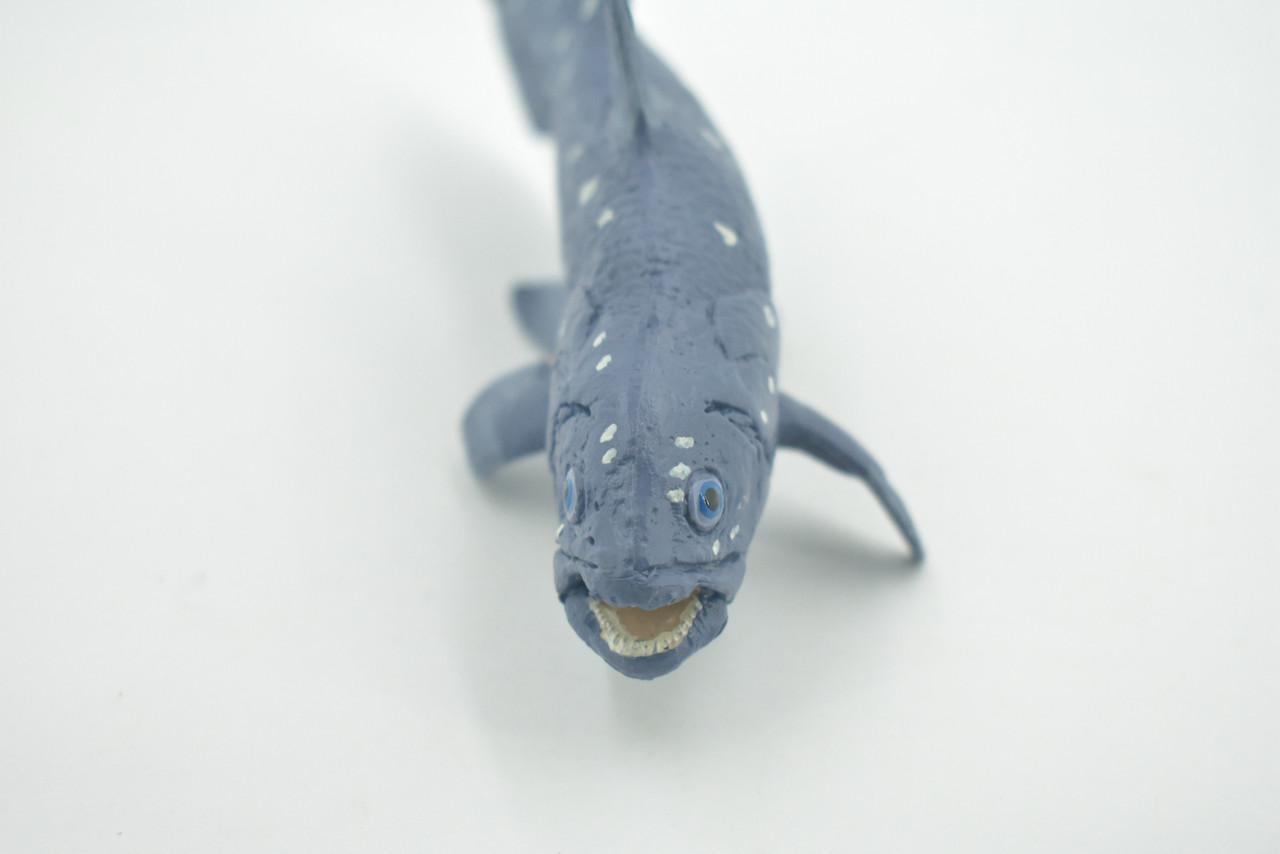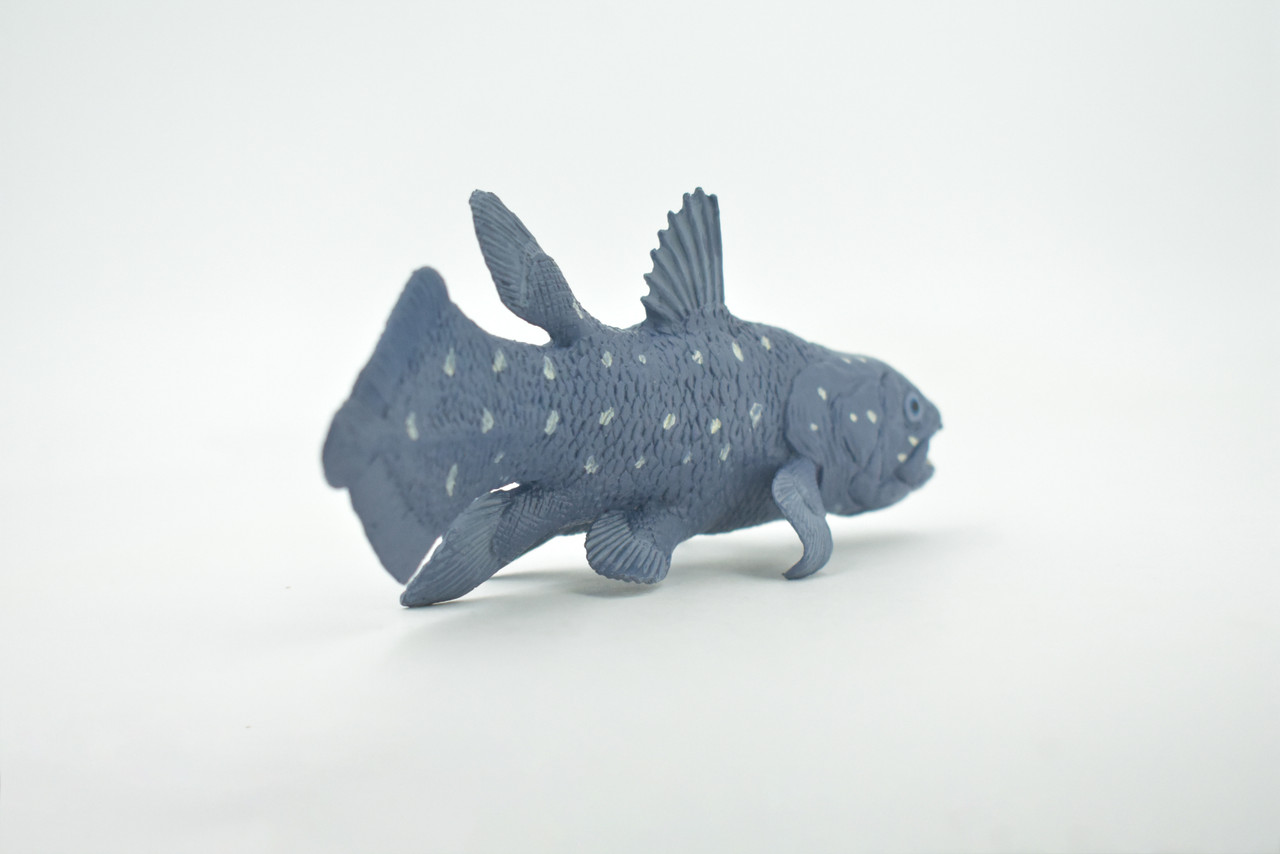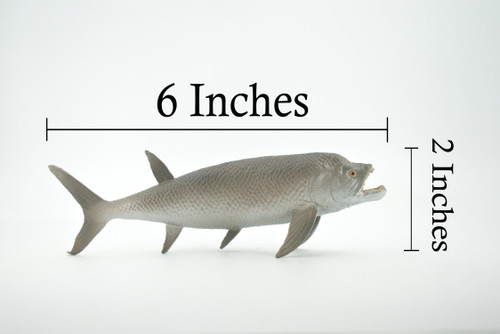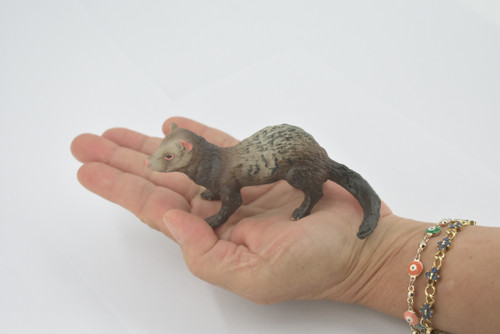Product Description
This Coelacanth, 5 1/2" figure includes hand painted features to give it realistic details that are true to natural anatomy. This figure is considered a museum quality replica. Highest Quality Natural Rubber.
Coelacanths (seel-a-canths) were once known only from fossils and were thought to have gone extinct approximately 65 million years ago (Mya), during the great extinction in which the dinosaurs disappeared. The most recent fossil record dates from about 80 Mya but the earliest records date back as far as approximately 360 Mya. At one time coelacanths were a large group comprising about 90 valid species that were distributed worldwide in both marine and freshwaters. Today, there are two known living species. Numerous characteristics are unique to the coelacanth among living fishes. Among them is the presence of a "rostral organ" in the snout that is part of the electro sensory system, and an intracranial joint or "hinge" in the skull that allows the anterior portion of the cranium to swing upwards, greatly enlarging the gape of the mouth. Neither character exists in any other living vertebrate. Other unique anatomical features include a hollow fluid-filled "notochord" (a primitive feature in vertebrates) underlying the spinal cord and extending the length of the body, vertebrae that are incompletely formed or totally lacking bony centra, an oil-filled gas bladder, fleshy "lobed" or limb-like fins that are internally supported by bone, and paired fins that move in a synchronized tetrapod-like pattern. The first living coelacanth was discovered in 1938 and bears the scientific name Latimeria chalumnae. The species was described by Professor J.L.B. Smith in 1939 and was named after its discoverer, Miss Marjorie Courtenay-Latimer. Although Latimeria is a genus distinct from the fossil forms, all coelacanths share numerous features and are easily recognized by their distinctive shape and lobed fins. For many years, living coelacanths were known only from the western Indian Ocean, primarily from the Comoros Islands, but in September 1997 and again in July 1998, coelacanths were captured in northern Sulawesi, Indonesia, nearly 6,000 miles to the east of the Comoros. The Indonesian discovery was made by Mark V. Erdmann, then a doctoral student from UC Berkeley studying coral reef ecology in Indonesia. Although the Indonesian specimens superficially resemble those in the western Indian Ocean, analyses of DNA from tissue samples from one of the Indonesian specimens revealed significant genetic differentiation from the Indian Ocean population. The authors of two studies have suggested that the two populations have been separated for at least several millions of years.
Thanks for visiting Collectible Wildlife Gifts, the leading provider of high-quality, lifelike animal Designs and gifts! We work hard to ensure we have a diverse range of products. Each product is inspected for their quality craftsmanship. Whether you're searching for a great gift or seeking educational designs for displays, we’ve got you covered.
At Collectible Wildlife Gifts, our products appeal to a wide range of customers, including family, friends, and educators. Our products are trusted and used by professional organizations as well including aquariums, zoos, and movie studios.
Our extensive line of products boasts everything from plush sharks to educational animal growth cycles. Our products bring joy to recipients, and serve as valuable educational resources, sparking curiosity and fostering learning.
Discover the wonders of the natural world with Collectible Wildlife Gifts. Browse our collection today!

